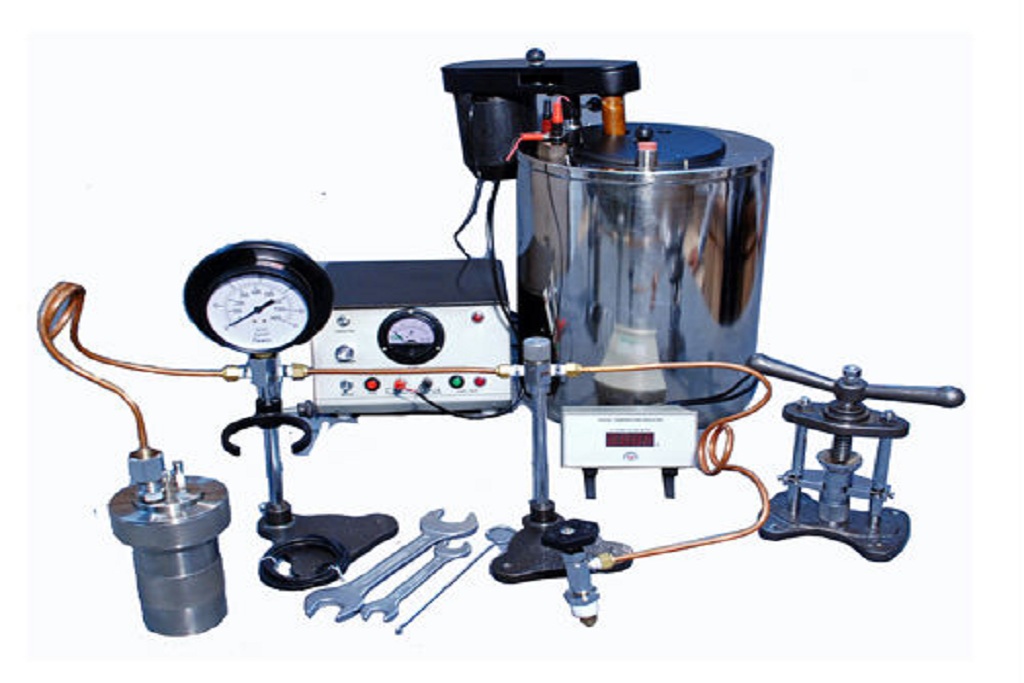Exploring Combustion with Bomb Calorimetry: In-Depth Overview

Introduction
Bomb calorimetry is a method use to check the heat of burning of a sample. In this process, a sample is burn in a high-pressure oxygen environment that creates heat that is then immerse by a water bath that is situate around the burning chamber. After that, the fluctuation in temperature of the water bath is employe as a factor in the calculation of the sample’s heat of combustion.
The bomb calorimeter is an essential tool for investigating the energy content of different compounds. This gadget has exceptional capabilities in enabling scientists and researchers to accurately quantify the thermal energy emitte or absorbe during a chemical reaction or combustion process. The term “bomb calorimeter” may first seem daunting, but, its underlying principles and extensive applications are both intriguing and extensively used across many scientific disciplines.
The operational principles of a bomb calorimeter
A Bomb Calorimeter is an apparatus use for the determination of the heat of combustion shown by a given sample. The specimen is carefully inserted into a compact, chemically inert crucible and then positioned into a controlled environment of elevated oxygen pressure, often known as a bomb. The bomb is filled with oxygen in accordance with the guidelines provide by Bomb calorimeter manufacturers, and a thorough inspection is conducted to verify that all connections are securely secured and free from any leaks.
The measurement commences with introducing a predetermined quantity of water into the water bath, followed by the use of a thermometer to document its starting temperature. Subsequently, the water is agitate in order to achieve a consistent temperature distribution. Subsequently, an ignition wire is used to initiate combustion of the sample contained inside the bomb, resulting in the liberation of thermal energy. The thermal energy is absorbe by the water present in the water bath, leading to a rise in its temperature.
The temperature of the water bath is observe until it achieves a condition of equilibrium, at which joins the heat of combustion of the example might be determined.
Application of Bomb calorimeter
- The potential uses of the bomb calorimeter are many and varied. The assessment of caloric content in different food items is a widely use practice within the realm of food research. Scientists may determine the energy content of a food sample by combusting it inside a bomb calorimeter and then measuring the consequent change in temperature. This allows for the calculation of energy content in units of calories or joules. The aforementioned data has significant importance in the context of nutritional labeling and comprehending the energy equilibrium of diverse food products.
- Moreover, the use of bomb calorimeters extends to the examination of fuel combustion, medicinal compounds, and the field of environmental research. This tool enables researchers to do analyses on the energy content of various fuels, evaluate the efficiency of combustion processes, and estimate the calorific value of pharmacological drugs. In the field of environmental science, it plays a crucial role in the determination of the energy content of waste materials and the evaluation of their potential as viable alternative energy sources. When it comes to measuring the calorific value of various substances, bomb calorimeters play a crucial role in laboratory settings. The variety of bomb calorimeter manufacturers in the market offers scientists options to choose from based on their specific needs and requirements, ensuring that the field of calorimetry continues to advance and contribute to scientific discoveries.
Bomb calorimetry is a valuable scientific tool with several significant benefits and applications. Here are some of the key advantages of using a bomb calorimeter:
- Accurate Measurement of Heat Content: One of the primary benefits of bomb calorimetry is its ability to provide highly accurate measurements of the heat content of a substance. This is crucial for understanding the energy content of materials, which is essential in fields such as chemistry, thermodynamics, and material science.
- Calorific Value Determination: Bomb calorimeters are widely use in the analysis of fuels, including fossil fuels and biofuels. They can accurately determine the calorific value (energy content) of these fuels, which is critical for assessing their suitability for various applications, including energy production and transportation.
- Quality Control in Industry: Industries involved in the production of energy, chemicals, and food products use bomb calorimetry to ensure quality control. It helps them verify that the products meet specific energy or calorific value standards, ensuring consistency and reliability.
To conclude
The bomb calorimeter is a very notable scientific apparatus that enables accurate quantification of thermal energy generated or absorbed in chemical reactions and combustion phenomena. The basics of this method include the precise monitoring of temperature variations in a water bath encompassing the reaction, hence enabling precise calorimetric analysis. The bomb calorimeter is a versatile tool that enables the exploration of the energy content of different substances, spanning across diverse scientific fields such as food science, fuel combustion, and environmental research. Its use offers significant contributions and vital knowledge to several theoretical restraints.



